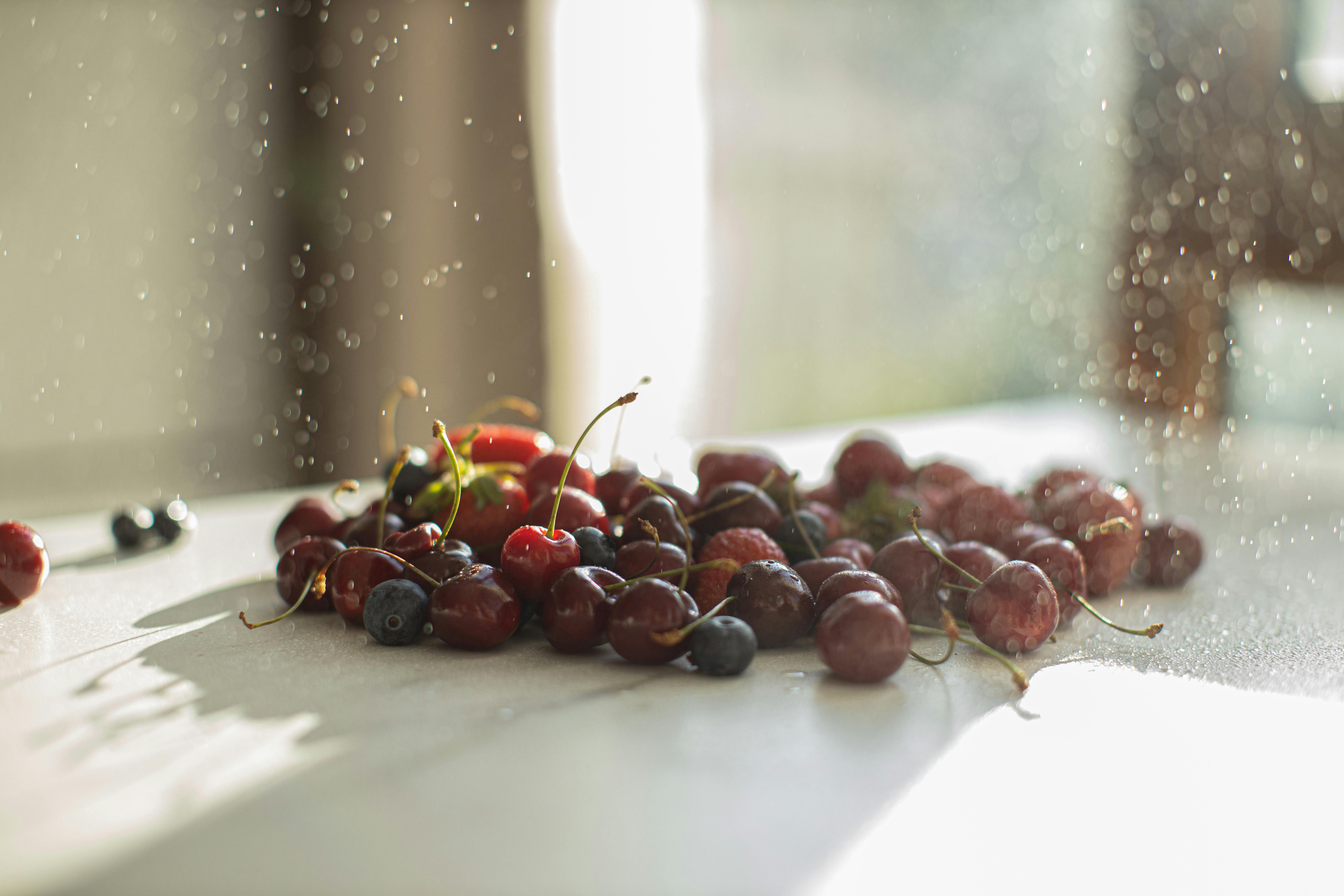Strawberries are a delicious and nutritious fruit that can be enjoyed fresh or in a variety of recipes. Unfortunately, they can also be difficult to grow successfully if you don’t pay close attention to their water needs. Knowing how much to water your strawberries is essential for producing a plentiful harvest of sweet, juicy fruit. In this article, we’ll discuss how much you should water strawberries and provide tips for ensuring their proper care.Strawberries need approximately 1 inch of water per week during the growing season. If rainfall is lacking, water them at least every other day. Be sure to water deeply, as shallow watering may not be enough. Additionally, mulching around the plants can help retain moisture in the soil.
Environmental Factors
Environmental factors play a major role in influencing the water requirements for strawberries. Temperature, wind speed, humidity and light intensity all affect the rate of evapotranspiration of the crop. In higher temperatures, more water is lost through evaporation and transpiration, meaning that more frequent irrigation is necessary to maintain satisfactory soil moisture levels. Wind speed increases the rate of evaporation from the soil surface and decreases the relative humidity of the air around plants, further increasing water loss from crops. High light intensities also increase evapotranspiration and therefore, water loss from crops.
Soil Type
The type of soil also affects how much water a strawberry crop will require. Soils with higher organic matter contents tend to have higher water-holding capacities, meaning that less frequent irrigation is necessary compared to soils with lower organic matter contents. Sandy soils are particularly prone to rapid drainage and will require more frequent irrigation than loam or clay soils which generally have better water-holding capacity.
Fertiliser Use
Fertilisers can also influence strawberry plants’ water requirements since their use increases crop growth rates which in turn increases demand for soil moisture by plants. When fertilisers are applied, they dissolve in the soil solution making nutrients available to crops which can result in greater demand for soil moisture if not managed properly. In situations where large amounts of fertiliser are applied at once it is important to adjust irrigation schedule accordingly as excessive fertiliser concentrations can burn plant roots and reduce crop yields.
Crop Growth Stage
The growth stage of strawberries also plays a role in determining their water requirements as different stages require different amounts of moisture for optimal growth and production. During flowering and fruiting stages, strawberries need more water than during vegetative stages as metabolic processes during these two stages require greater amounts of energy which needs to be supported with adequate supply of soil moisture. As such, it is important to adjust irrigation schedules according to specific crop growth stages in order to ensure optimum yields from strawberry crops.
Water Requirements for Indoor and Outdoor Strawberries
Strawberries are a delicious and nutritious fruit that are enjoyed by many. Strawberries can be grown both indoors and outdoors, but their water requirements are different depending on the environment. When it comes to growing strawberries indoors, it is important to provide them with the right amount of water. Indoor strawberry plants should be watered regularly, but not too often as overwatering can lead to root rot. The soil should be kept moist but not soggy, and if the soil becomes dry, it is best to water the plant deeply and allow the excess water to drain away.
Outdoor strawberry plants require more water than indoor plants because they are exposed to more heat and sunlight. Outdoor strawberry plants need plenty of moisture throughout the summer months when they are producing fruit. It is important to keep an eye on the soil moisture levels and provide additional water if necessary, especially during hot spells when the soil can dry out quickly. The best time to water outdoor strawberries is early in the morning or late at night when temperatures are cooler, as this will help prevent evaporation of the water before it has a chance to reach the roots.
Estimating the Amount of Water Needed for Strawberries
Growing strawberries can be a rewarding experience, but it is important to understand the amount of water they need in order to thrive. Strawberries are typically grown in containers or beds, and need regular watering in order to produce healthy fruit. Estimating the amount of water needed for strawberries will depend on a number of factors, including the size of the strawberry patch, climate and soil conditions.
The amount of water needed by strawberries can vary significantly depending on local climate conditions. In warmer climates, strawberries may require more frequent watering than in cooler regions. It is also important to consider soil type when estimating the amount of water needed for a strawberry patch. Sandy soils may require more frequent irrigation than clay soils, which generally hold moisture well.
When estimating how much water is needed for a strawberry patch, it is important to consider its size. A small plot may not require as much water as a large one, so it is best to adjust your irrigation plan accordingly. Generally speaking, strawberries should receive at least one inch of water per week during their growing season. If rainfall is insufficient during this time, supplemental irrigation should be used to ensure that the plants get enough moisture throughout their growing season.
In addition to monitoring soil moisture levels and adjusting irrigation amounts accordingly, it is also important to make sure that excess moisture does not accumulate around the strawberry plants. Poor drainage or overly wet conditions can lead to disease and other problems with your crop. As such, it is important to adjust your watering schedule accordingly based on local weather conditions and soil type.
In summary, determining the amount of water needed for strawberries can be challenging due to varying local climate conditions and soil types. However, following general guidelines such as providing at least one inch of water per week and monitoring soil moisture levels can help you ensure that your strawberry crop gets adequate moisture throughout its growing season.
Advantages of Overwatering Strawberries
Overwatering strawberries can actually be beneficial in certain circumstances. It can help to keep the soil around the strawberry plants moist, which helps to prevent nutrient leaching and also keeps the roots of the plants well-hydrated. Additionally, overwatering can help to reduce the risk of heat stress on the plants during hot weather. The additional water also helps to promote strong and healthy growth of the strawberry plants.
Advantages of Underwatering Strawberries
Underwatering strawberries can also be beneficial in certain circumstances. By avoiding overwatering, you will reduce the risk of fungal diseases that thrive in wet conditions. Additionally, underwatering can encourage deeper root growth, as the plants will have to reach further down into the soil for moisture. This increased root depth can help to improve nutrient uptake and water retention, which is beneficial for overall plant health.

Signs That You Are Overwatering Your Strawberries
The first sign that you may be overwatering your strawberries is the presence of yellow or wilted leaves. This usually indicates that the soil is too wet and that the roots don’t have access to oxygen. If left unchecked, this can lead to root rot and eventually the death of your plants. Additionally, you may also notice a growth of mold or fungi on the soil or on the leaves of your plants. This is another sign that you are overwatering and should be addressed immediately.
In more extreme cases, you may also notice an increase in pests such as snails, slugs, and other insects. These pests are attracted to moist environments and will feed on your plants if given the opportunity. If you see these pests in your strawberry patch, then it’s a sure sign that you are overwatering.
Signs That You Are Underwatering Your Strawberries
The most obvious sign of underwatering is wilting leaves or brown spots appearing on the foliage. This usually indicates a lack of water in the soil and can eventually lead to death if not addressed quickly. Additionally, you may also notice an increase in weeds in your strawberry patch as they tend to thrive with less water than your strawberries do.
You may also notice a decrease in fruit production as not enough water will stunt growth and prevent flowers from blooming into fruit-bearing berries. Lastly, if left unchecked for too long, you may even begin to see cracks appearing in the soil which is a sure sign that it has become too dry for proper plant growth.
Testing Soil Moisture for Strawberries
Testing soil moisture for strawberries is an important part of cultivating healthy and productive plants. It is essential to ensure that the soil is neither too wet or too dry, as either can cause problems with growth and development. The best way to test soil moisture for strawberry plants is to use a soil moisture meter. These meters measure the amount of water in the soil and can be found at most gardening stores. To use a meter, insert it into the soil near the root area of the plant and wait for a reading. If the reading is between 10-20 percent, then the soil has adequate moisture; if it is below 10 percent, then it needs more water; if it is above 20 percent, then it needs less water.
In addition to using a soil moisture meter, there are other methods that can be used to test soil moisture for strawberry plants. One such method is to take a handful of soil from around the plant’s roots and squeeze it in your hand. If there are drops of water that come out, then there is adequate moisture; if no drops come out then there may not be enough water in the soil. Another method involves digging down around four inches from the plant’s roots and feeling the texture of the dirt with your fingers. If it feels damp but not wet, then that indicates that there is adequate moisture in the soil; if it feels dry or powdery, then there may not be enough water in the soil.
It is important to monitor your strawberry plants’ watering needs regularly throughout their growth cycle as this will ensure they develop properly and produce healthy fruit. By using a combination of methods such as testing with a meter or feeling around their roots you can better determine when they need more or less water. With proper care and attention your strawberries will flourish!
How to Adjust Waterings For Different Weather Conditions
Knowing how to adjust your watering schedule for different weather conditions is essential for maintaining healthy plants. It is important to understand how different weather conditions affect the amount of water needed by your plants, and then adjust your watering schedule accordingly. In general, warmer temperatures and more sun will require more frequent watering, while cooler temperatures and less sun will require less frequent watering.
When temperatures are consistently above 80 degrees Fahrenheit, you should increase the frequency of your waterings as plants will be losing water faster due to increased evaporation. Make sure to add enough water so that the soil is moist but not soggy. Additionally, if there is high humidity in the air and/or frequent rainfall, you may need to decrease the frequency of your waterings as plants will not be losing as much moisture through evaporation.
On days when there is little or no sunlight, you should reduce the amount of water applied as plants will not be using as much moisture due to reduced photosynthesis. In addition, cooler temperatures will mean that plants are using less moisture due to decreased metabolic activity. If there are long periods of cloudy or rainy days in a row, you may even want to skip a day or two of watering entirely if there has been enough rainfall in that period of time.
Finally, it is important to pay attention to signs from your plants that they may need more or less water than usual. Wilting leaves can indicate that a plant needs more moisture, while yellowing leaves can indicate that it has been over watered. By adjusting your watering schedule based on weather conditions and observing signs from your plants, you can ensure that they stay healthy and thriving all year round!

Conclusion
Strawberries require consistent watering to grow and produce a full crop. Depending on the region, they may need to be watered anywhere from one to three times a week. It is important to keep the soil moist but not overly wet. During particularly hot or dry periods, you may need to water your strawberries more often. If you’re unsure how much water your strawberry plants need, it’s best to err on the side of caution and water them every few days. Doing so will help ensure that they get the moisture they need for healthy growth and production.
In general, providing adequate water for your strawberry plants is essential for their health and productivity. Taking into consideration both your local climate and soil conditions will help you determine the right watering schedule for your plants. With proper care and maintenance, you should be able to enjoy a delicious strawberry crop throughout the growing season.



